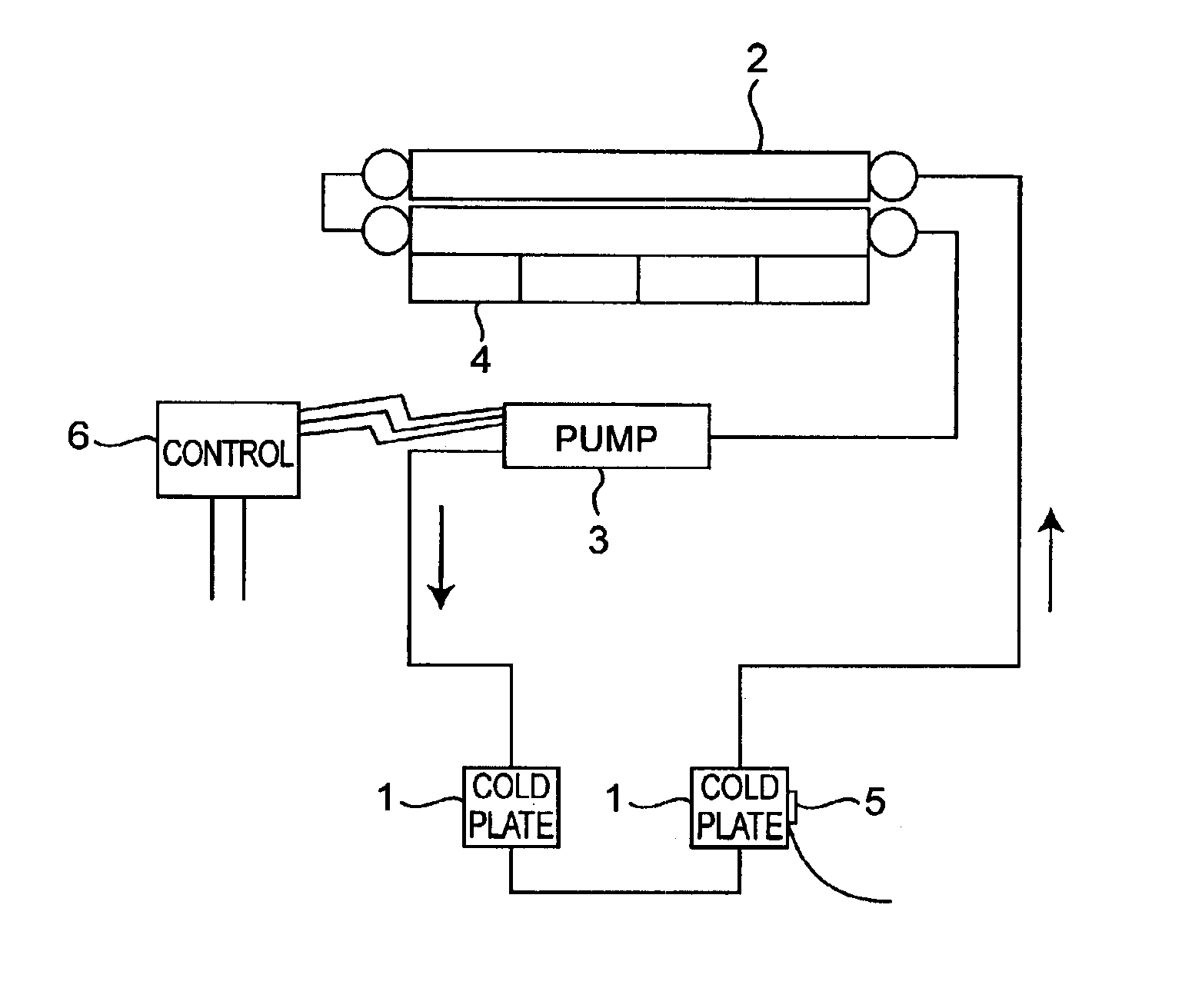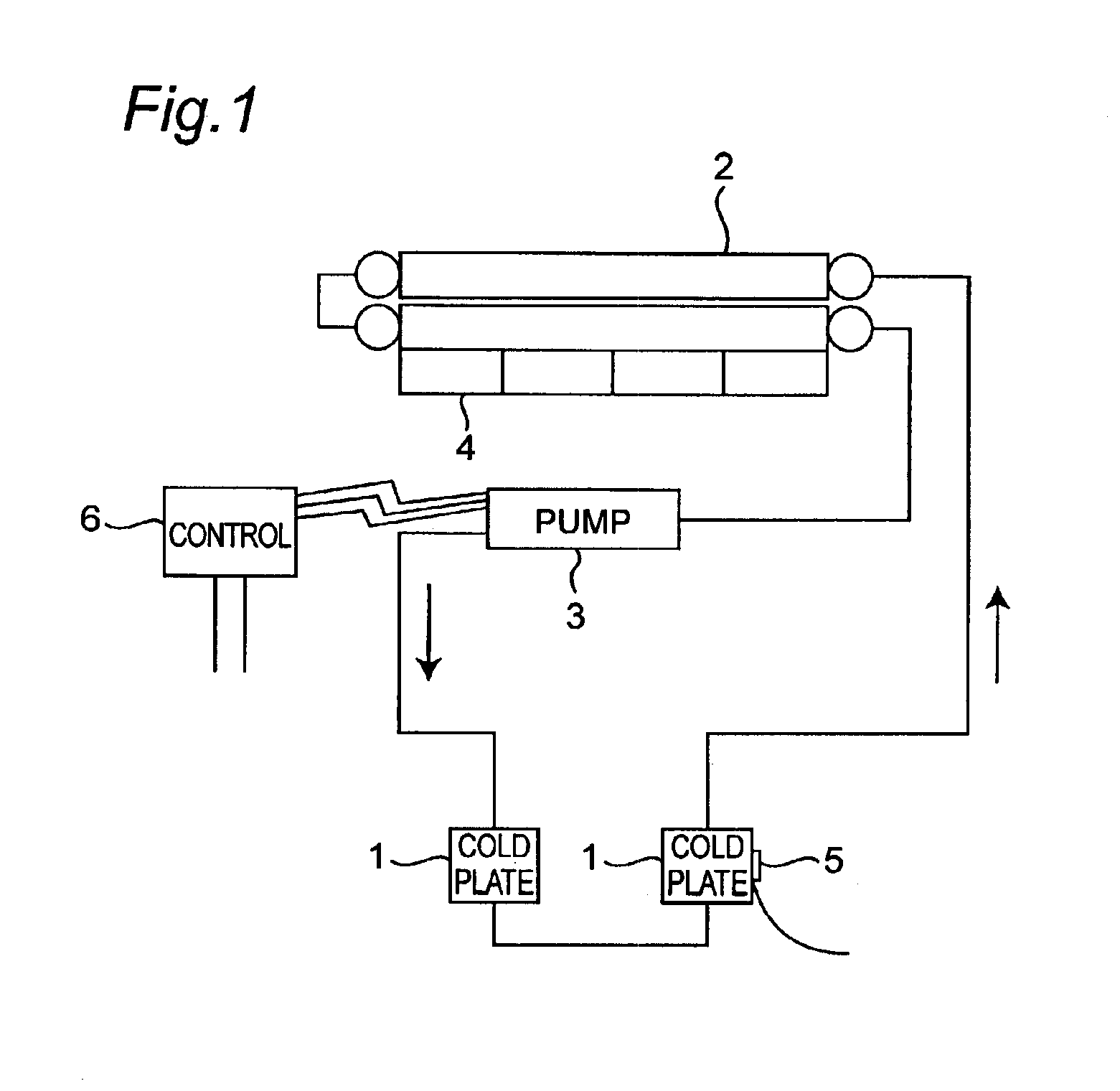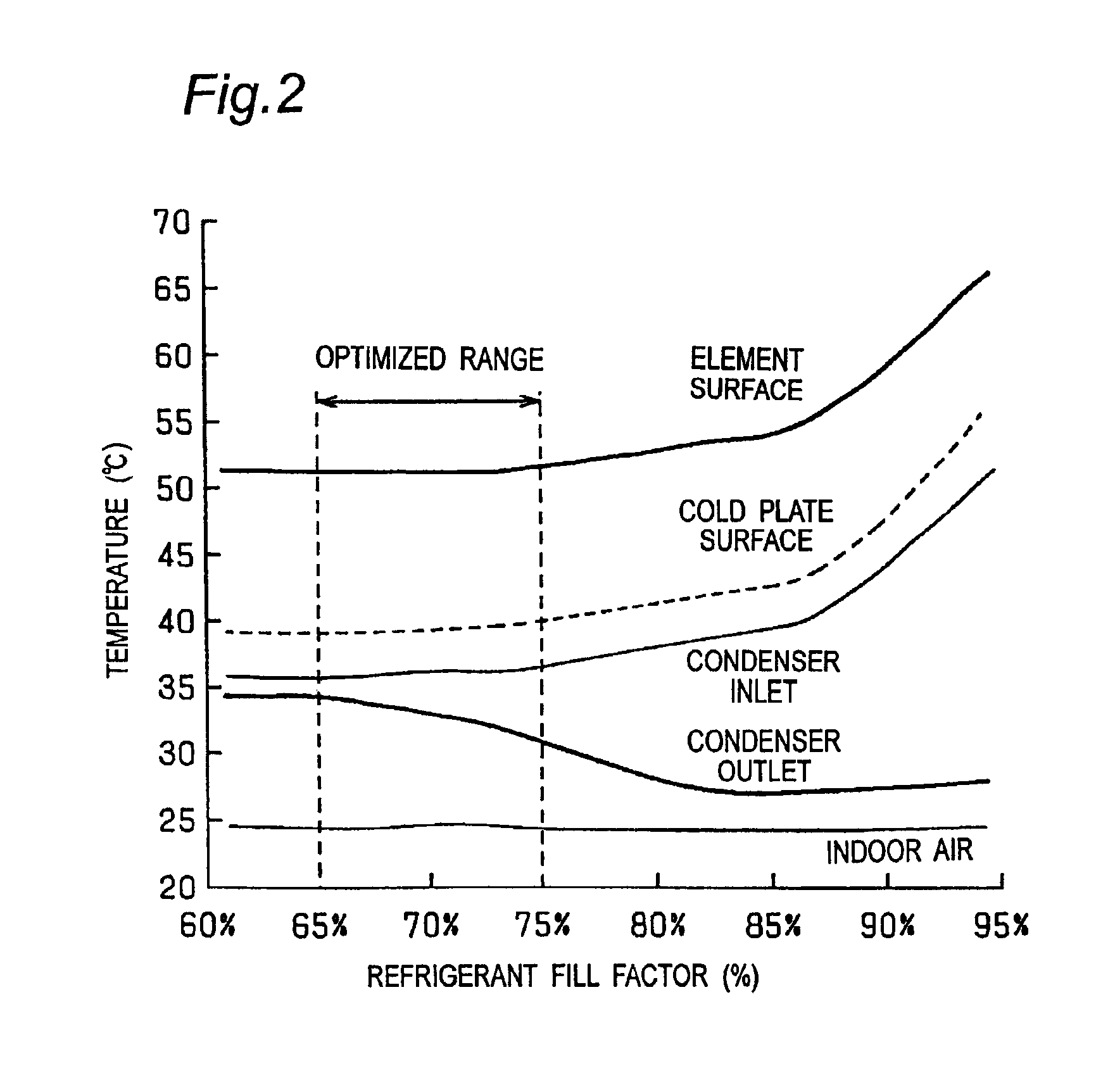Semiconductor cooling device and method of controlling same
- Summary
- Abstract
- Description
- Claims
- Application Information
AI Technical Summary
Benefits of technology
Problems solved by technology
Method used
Image
Examples
Embodiment Construction
This application is based on an application No. 2002-121919 filed Apr. 24, 2002 in Japan, the content of which is herein expressly incorporated by reference in its entirety.
Referring first to FIG. 1 showing a refrigerating cycle employed in the present invention, a cooling device includes a plurality of (for example, two) cold plates 1 for cooling highly exothermic semiconductor elements, that is, semiconductor elements tending to emit a substantial amount of heat when in operation, a condenser 2, and an inverter-controlled refrigerant pump 3, all connected in series with each other to define a refrigerating cycle. A refrigerant is filled in this refrigerating cycle. The condenser 2 is adapted to be cooled by a fan 4.
The cooling device is so designed that the refrigerant emerging first from the condenser 2 is supplied towards the cold plates 1 by the refrigerant pump 3. The cold plates 1 so supplied with the refrigerant absorb heat generated by the highly exothermic semiconductor el...
PUM
 Login to View More
Login to View More Abstract
Description
Claims
Application Information
 Login to View More
Login to View More - R&D
- Intellectual Property
- Life Sciences
- Materials
- Tech Scout
- Unparalleled Data Quality
- Higher Quality Content
- 60% Fewer Hallucinations
Browse by: Latest US Patents, China's latest patents, Technical Efficacy Thesaurus, Application Domain, Technology Topic, Popular Technical Reports.
© 2025 PatSnap. All rights reserved.Legal|Privacy policy|Modern Slavery Act Transparency Statement|Sitemap|About US| Contact US: help@patsnap.com



